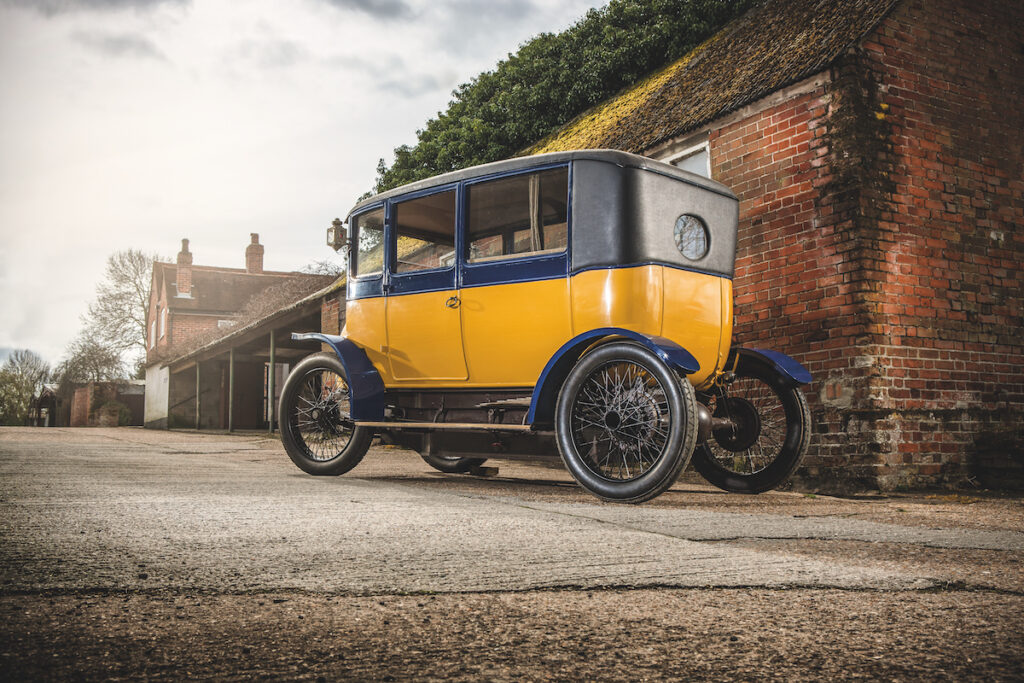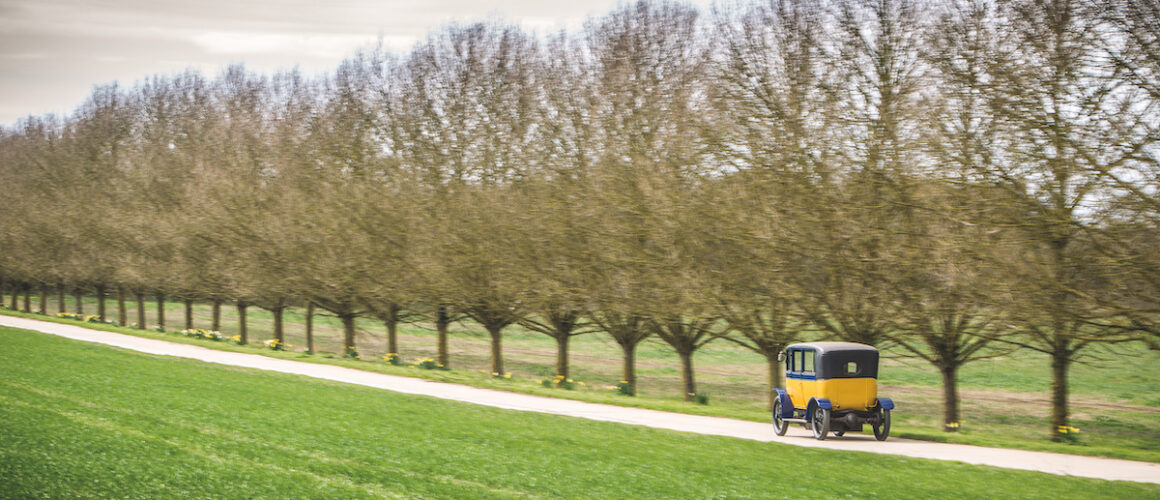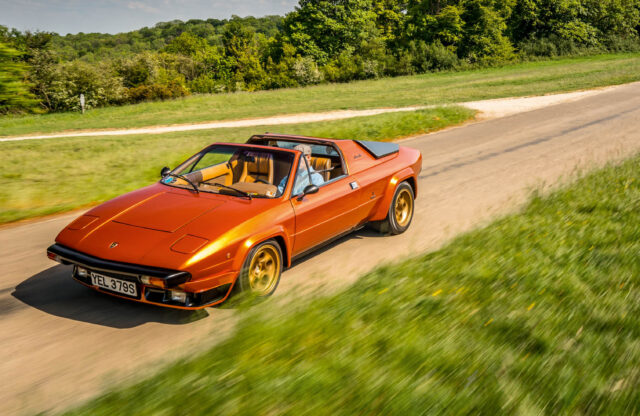Electric cars are nothing new and here’s the proof: Octane drives the Edison Electric, more than a century old and now restored
It was August 1896. The Edison Illuminating Company was holding its annual convention at the Oriental Hotel on Manhattan Beach in Brooklyn. At one session the conversation turned to the newfangled horseless carriage and the revenue that could be earned from charging storage batteries for the electric vehicles that the delegates assumed would dominate the market. Suddenly, Edison company director Alexander Dow dropped a bombshell into the discussion. Indicating the chief engineer of the Detroit branch of Edison, he remarked: ‘This young fellow has made a gas car…’ He went on to describe how he had seen the ‘young fellow’ – 33-year-old Henry Ford – drive away from the Edison plant with his wife and baby son in a little carriage that moved without horses.
Henry Ford was asked to explain how his carriage worked to Thomas Edison, from whose Menlo Park laboratories in New Jersey inventions flowed in a ceaseless stream. Edison asked whether Ford’s car had a four-cycle engine and if the gas in the cylinder was exploded by electricity. When Henry had finished explaining how his little Quadricycle ran – presumably omitting to add that he had forgotten to fit it with brakes – Edison (who had built a battery-powered front-wheel-drive electric car the previous year) thumped the table and roared: ‘Young man, that’s the thing! You have it, keep at it! Electric cars must keep too near to power stations, the storage battery is too heavy… Your car is self-contained – it carries its own powerplant – no fire, no boiler, no smoke, no steam. You have the thing. Keep at it!’
Said Henry later: ‘That bang on the table was worth worlds to me. No man up to then had given me any encouragement… out of a clear sky, the greatest inventive genius in the world had given me a complete approval. The man who knew more about electricity in the world had said that, for the purpose, my gas motor was better than any electric car could be – it could go long distances, he said, and there would be stations to supply the cars with hydro-carbon.’
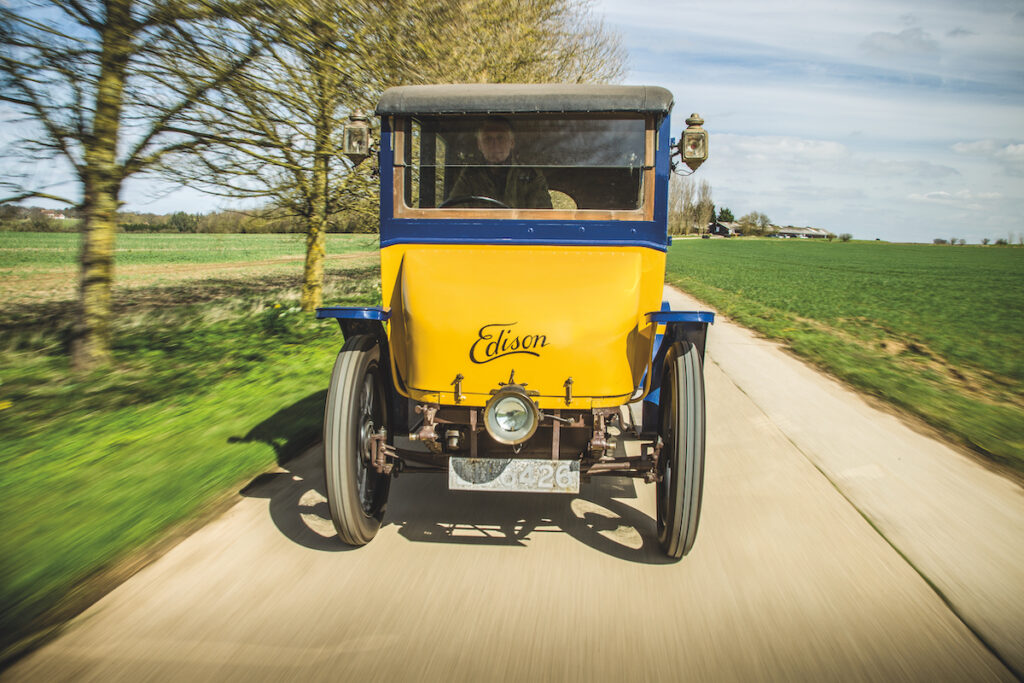
Nevertheless, nearly 20 years later, when Henry’s Ford Motor Company had become the world’s biggest carmaker and Edison had invented a nickel-iron battery that promised to give electric cars increased range, Ford and his former employer collaborated on a project to build a ‘Ford Electric’ that would sell for $900 and have a range of 100 miles. But the project got no further than a couple of experimental electric cars; it was shelved when the mercurial Ford found that the Edison nickel-iron batteries with which he had decreed a prototype based on a Model T chassis should be fitted, had been found wanting and been replaced by conventional lead-acid batteries. Even though
he had reportedly invested $1.5 million in the electric-car project and was about to buy 100,000 Edison batteries, Ford flew into a rage and killed the project there and then.
But an unlikely company was already trying to make Edison’s dream of long-range electrics a reality. Before the Great War, Scotland had an active motor industry, dominated by three companies – Argyll, Albion and Arrol-Johnston. The latter firm, which had made its name at the turn of the century building high and cumbersome motor dog carts, had latterly been revitalised under the direction of former Sunbeam works manager Thomas Pullinger, who had joined them in 1907. Seduced by the thought of increased sales, in 1913 Pullinger moved production of the Arrol-Johnston from its original home in Paisley to Dumfries in order to be closer to the profitable English market; the previous year he had commissioned a magnificent new factory from American architect Albert Kahn, who was, coincidentally, the chosen architect of the Ford Motor Company. Naturally, the new factory was constructed using Kahn’s patented reinforced concrete method, for Pullinger had visited America and been impressed by the Kahn-designed Highland Park plant that Ford had opened in 1909; conveniently, since 1907 the Kahn ‘Trussed Steel Concrete Company’ had a London office run by Albert Kahn’s brother Moritz.
Pullinger had ambitious plans for his new factory; in April 1913 he gathered his dealers together in Dumfries to announce that Arrol-Johnston was devoting considerable attention to the question of the electrically propelled vehicle in Britain alongside its petrol-driven vehicles. Said a reporter from Commercial Motor magazine: ‘I do not think I am disclosing information prematurely when I state that the interests of the Arrol-Johnston people are closely bound up with the much-boomed Edison battery, from which many great developments may now be expected.’
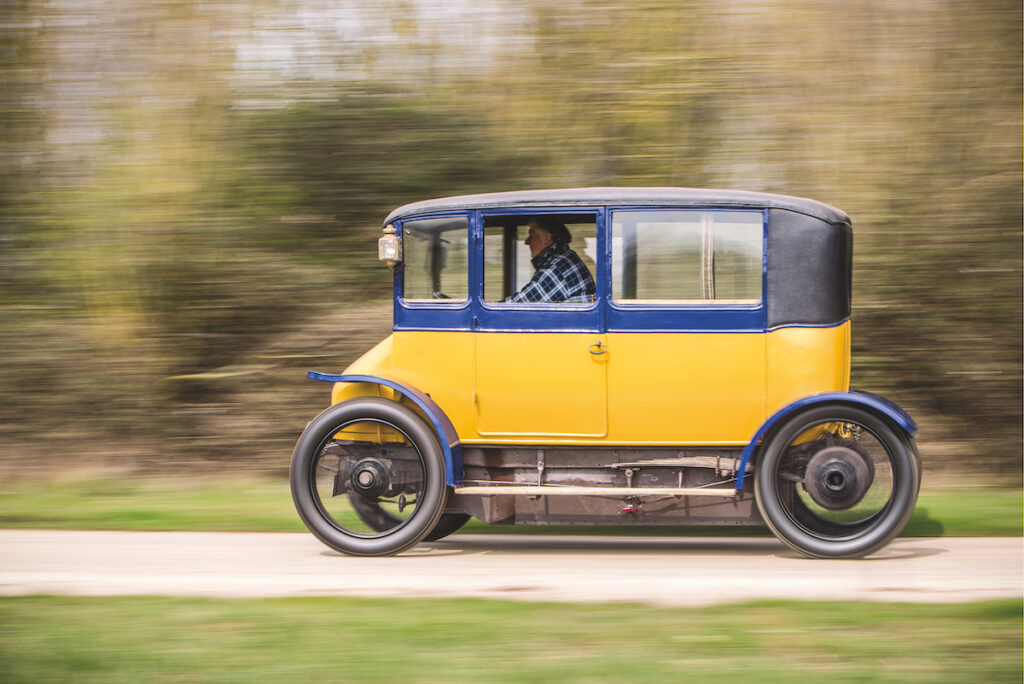
Coincidentally, Edison Accumulators Ltd had been set up in London with temporary offices at 41 Great Portland Street under the management of one JF Monnot, the sole European concessionaire for the Edison storage battery, to promote the battery-electric vehicle in England. Its principal directors were Colonel HCL Holden, the designer of the Brooklands track, and Lord Montagu of Beaulieu, editor of The Car magazine. The Edison Accumulators company soon found a new home, for in November 1913 Lord Montagu opened its new showrooms in Duke Street, Piccadilly.
Events seemed to be moving fast at the Dumfries factory; at the beginning of May, Commercial Motor had published a follow-up report on Arrol-Johnston’s electric ambitions: ‘Actually, however, matters are further advanced than appears to be generally known, and, curiously enough, this development is starting from the pleasure-car end, Mr Pullinger of the Arrol-Johnston Car Co Ltd having decided to devote one-third of his new works at Paisley to the manufacture of a high-grade chassis which will be equipped exclusively with the Edison storage battery. Twelve hundred of these cars will be made at first, and it is anticipated that they will mark a notable step forward in combining first-rate engineering practice, fine bodywork, and reasonable price in one and the same vehicle.’
This is where the story gets confusing. In his book Lost Causes of Motoring Lord Montagu wrote: ‘The car to be marketed [by Edison Accumulators Limited] was based on the Detroit Electric – incidentally, the last electric private car to be made in series in the USA – and Arrol-Johnston contracted to build a preliminary series of fifty.’ Whether those were in addition to the planned 1200 electrics or a scaling down of Pullinger’s forecast is unclear, nor is it known how many electric cars Arrol-Johnston manufactured, or if any were actually sold.
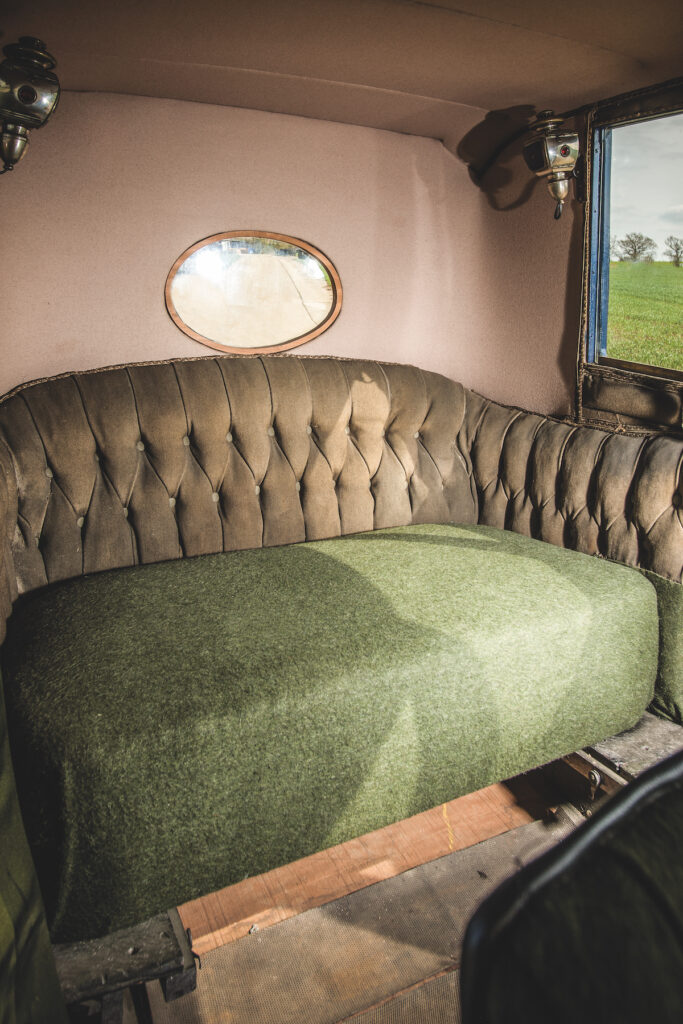
There is photographic evidence of the existence of two, both coupés with Renault-like coal-scuttle bonnets – a feature also of the company’s 15.9hp petrol-powered mainstay – and worm-drive rear axles. One of these was driven from Dumfries to London in June 1913 by Edison engineer ME Fox under official observation to demonstrate the practicality of the system – it needed 13 recharging stops in 382 miles – and the other was exhibited at the 1913 Olympia Motor Show. The Edison Accumulator company certainly issued a 20-page catalogue of its automobiles for 1916, but there was a war on and this might have been a flight of fancy. However, it definitely found customers for its electric commercial vehicles in the period, including a number of omnibuses, one of which was sold to York in 1915, others going to West Bromwich and Loughborough. There were also half a dozen vans for the well-known London store Harrods. Confidently, Edison Accumulators guaranteed their batteries to maintain 100% of their original charge for four years provided they were maintained according to the company’s printed schedule.
And there is a mystery wrapped up in this particular enigma in the shape of the 1913 Edison Electric owned by Bob Burrell of Chelmsford in Essex, for it resembles neither of the two known, if long-lost, Arrol-Johnston-Edison cars. Its early history is unknown, but it was apparently discovered 60 years or so ago behind a garage on London’s North Circular Road, either by Veteran Car Club stalwart Reg Taverner or by the Sharpe brothers, whose Gables Garage at Rayleigh in Essex was home to an ever-growing collection of old cars that was to total more than 200 at its peak before most were sold in 2005.
The Edison, a stubby coupé bodied by top coachbuilder Offord of George Street, just off Portman Square, had been partly dismantled, and its rear axle was out, so to tow it back to Rayleigh the Sharpes clamped a scaffolding pole to the rear cantilever springs and slid the artillery wheels onto this impromptu hub.
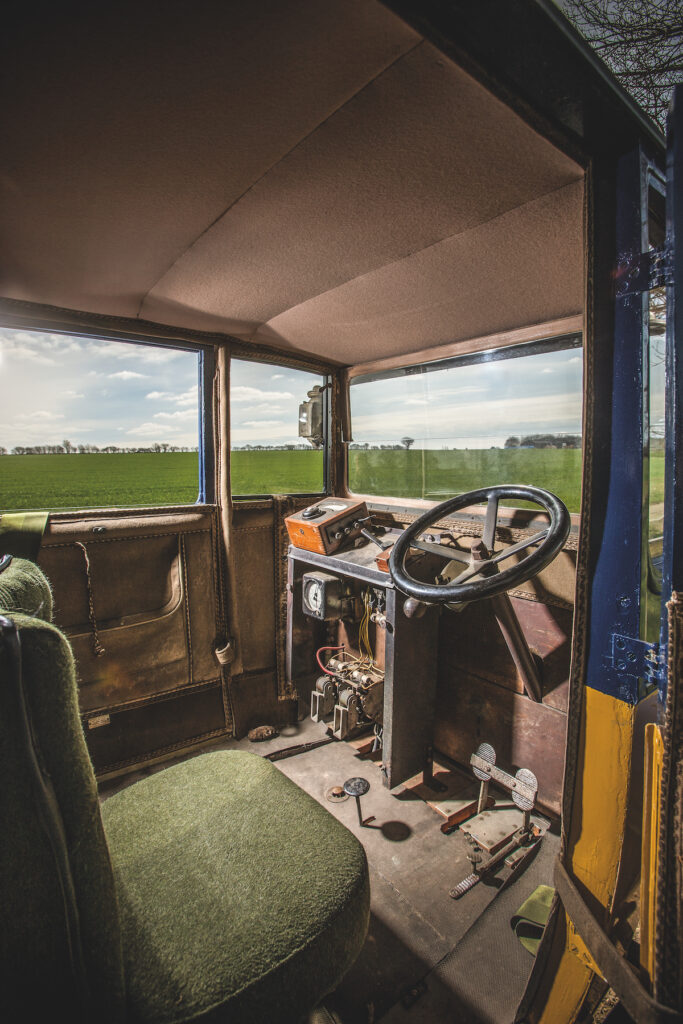
Bob Burrell is a former electrical engineer who for many years has built, worked on and competed in historic racing cars. He’s best-known for his fearsome 8.0-litre Phantom III-engined Bentley-Royce – and was a frequent visitor to the Gables Garage where the Edison was stored on a raised four-post lift. Bob told me that Terry Sharpe had asked him when he was going to restore the Edison for them; fascinated by this early electric, Bob quoted him a price of £5 an hour. This was apparently too much for the penny-pinching Terry Sharpe, but ten years or so later he again asked Bob when he would restore the Edison. ‘£10 an hour,’ came the response. ‘But it was only £5 last time,’ wailed Sharpe. And there the matter rested until 2002, after Terry had died, when the family decided that Bob Burrell should have the car, as that was what Terry would have wished.
Bob took the body off the chassis and handed it to his employee Dave Unsworth to repair. The basic structure proved remarkably sound, and little of its wood frame needed replacement, only a general tightening of joints being necessary; the guiding principle was to retain as much of the original structure as possible, though some of the external panels had to be repaired or replaced. However, the internal trim was retained, the cloth door panels and rear seatback only needing cleaning, though the driver’s seat and rear seat cushion were in a worse state and were covered over with new woollen cloth to protect them.
Bob Burrell remade the rusted dummy bonnet (whose main function seemed to be to keep the lower end of the steering column dry) in aluminium, but the only major replacement was the fitting of new wire wheels built by Richards Brothers of Cardiff in lieu of the original steel artillery wheels. These, though looking externally sound, had corroded internally to such an extent that they were dangerous. The finishing touch was to repaint the body in its original yellow-and-blue livery, though the paintwork under the bonnet and inside the car was preserved in its original state.
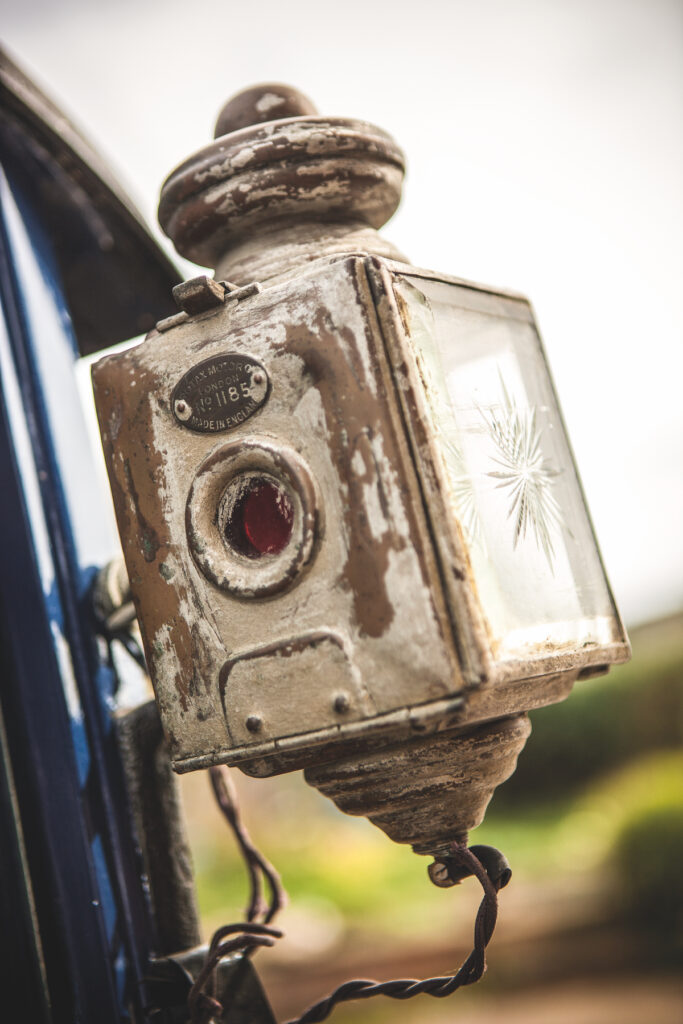
Meanwhile, Bob Burrell got on with restoring the chassis and running gear. The chassis frame (which bears the stamping ‘Edison 1’) is obviously of Arrol-Johnson manufacture – indeed, the wheel-hubs proclaim the fact – and has much in common with the known features of the frame of the Arrol-Johnston-Edison electric described in The Autocar of December 1913, with its long cantilever rear springs (the petrol A-Js had full elliptics). Yet the forward driving position and transmission layout are entirely different and the battery stowage – 15 large 2-volt 950Ah batteries are now used instead of the long-gone Edison NiFe units – in a sort of steel punt structure hung below the chassis is smaller than the layout shown in The Autocar.
My guess that this mystery Edison Electric, with its solitary driver’s seat, would have been a demonstrator town car for the Duke Street showrooms; the body certainly appears to be original to the chassis – ‘All the bolt holes match,’ Bob Burrell told me.
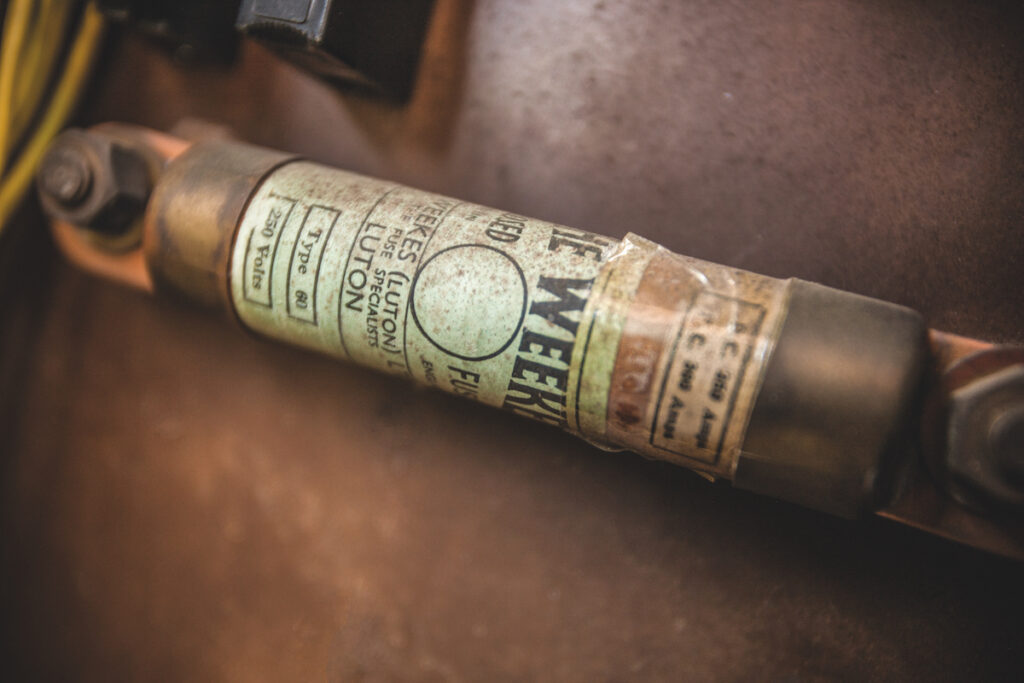
For me, driving the Edison was a new experience in Edwardian motoring. Instead of a side lever linked to a crash gearbox, there is simply a small handle on the dash with forward, neutral and reverse positions. The original speed linkage on the steering column, which equated to a throttle control, was missing, so a left-foot pedal now regulates the speed. Tread on that and the Edison gathers speed – ‘accelerate’ would be the wrong word in the circumstances – to a perfect-for-town-use maximum of around 25mph, accompanied by terrifying flashes from two big relays in the control box to the left of the driver. Oddly, there’s a separate brake pedal for each rear wheel; Bob has bolted a bar between them so they now work together…
The driving position, with its steeply inclined steering column, is of the ‘sit up and beg’ variety, like a 1960s Mini’s, and the initially heavy steering lightens as the car gathers momentum. Then it’s rather like an automatic: all you need to do is keep your left foot on the pedal and let the relays do the rest. Progress on hills is slow but inexorable. It must have seemed like magic to the Edwardians: they didn’t call Thomas Alva Edison ‘the Wizard of Menlo Park’ for nothing.
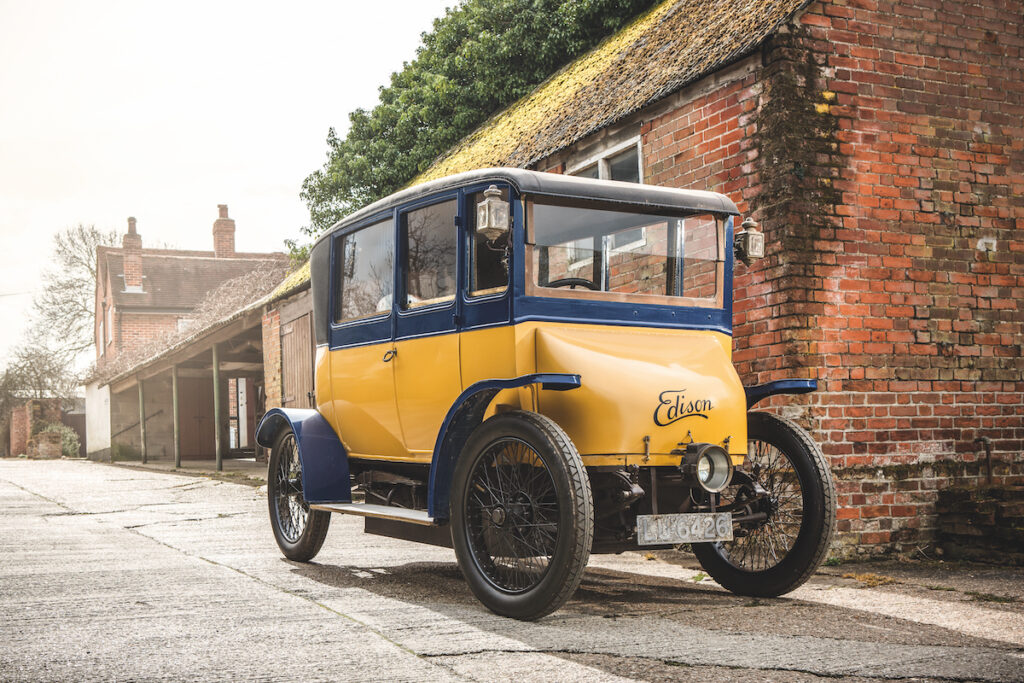
Factfile – 1913 Edison Electric
Engine Electric motor powered by 15 2-volt, 950 Ah batteries Transmission Shaft drive to live rear axle Steering Steering box Suspension Front: beam axle, semi-elliptic leaf springs. Rear: live axle, cantilever springs Brakes Rear drums Weight 1500kg (approx) Top speed 25mph
This article was originally published in Octane 145, July 2015
